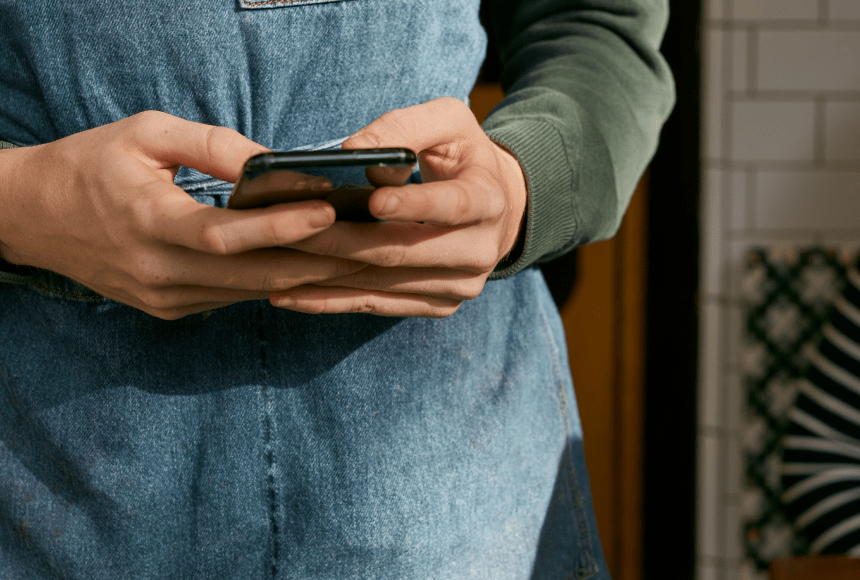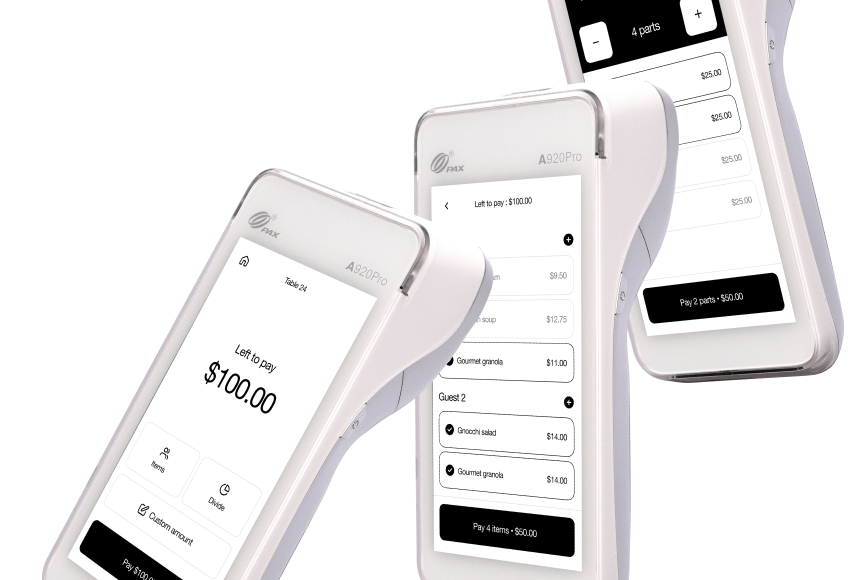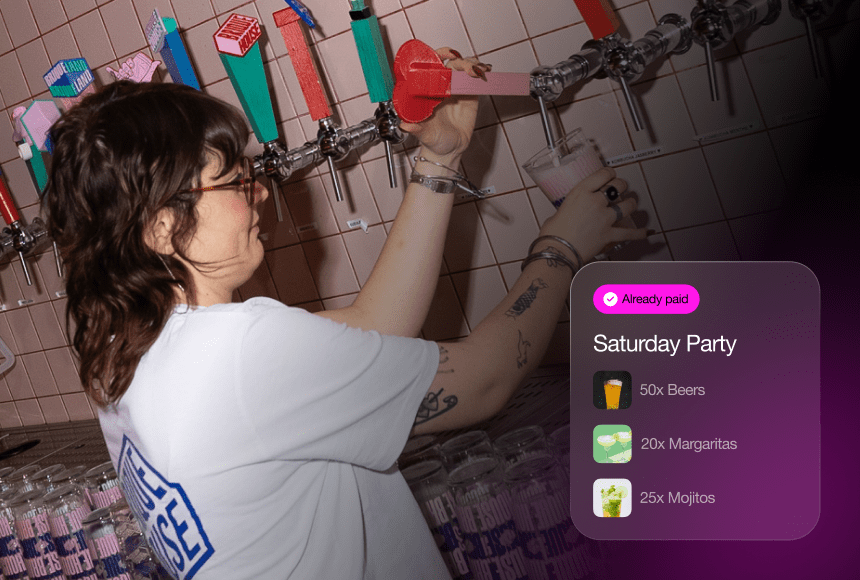
Transforming the Tip Culture Through Seamless Technology
Why Digital Innovation Boosts Your Tips
Tips aren’t just a perk for your service staff—they’re also a crucial measure of guest satisfaction and a meaningful slice of your overall restaurant revenue. Yet, in a world rapidly embracing cashless transactions and app-based orders, the concept of tipping is also evolving. According to recent surveys on digital tipping trends, restaurants that integrate frictionless digital solutions often see higher tip averages, sometimes by as much as 20%.
This isn’t just about convenience—though it certainly helps when customers can leave tips with a single tap. It’s also about the subtle psychology of digital experiences: diners appreciate efficient service, transparent billing, and a modern edge that streamlines their entire visit. When you remove awkward moments—like rummaging for cash or doing mental math at the table—patrons tend to tip more generously. Let’s explore how “digitalizing” your restaurant’s experience can help boost tips without sacrificing authenticity or warmth.
1. Embrace QR Code Payments for a Quick, Polished Finish
For many diners, the end of the meal can be a downer: they have to flag down a server, wait for a card reader or check presenter, and shuffle around to sign receipts. This waiting game not only delays table turnover but can also diminish the positive impression a fantastic meal created.
Enter QR code payments. When the final step is as simple as scanning a code at the table, the process is swift and even a bit novel. Solutions like sunday give diners the freedom to split bills, leave custom tips, and depart at their own pace—no need to track down a server for the physical check.
Why it lifts tips:
- Subtle Encouragement: Digital payment screens often display preset tipping options (15%, 20%, 25%, for example). Diners frequently select from these recommendations, which can be higher than they’d manually add on a written bill.
- Eliminates Bill-Sharing Awkwardness: In group settings, friction about who owes what often reduces overall tips. A digital pay-and-tip process clarifies each share, paving the way for more generous contributions.
- Upscale Feel: Adopting modern payment tech signals that your restaurant is progressive and service-focused, nudging diners to show their appreciation in the tip line.
2. Empower Servers with Real-Time Order Tracking
Digitalization isn’t just about the final bill; it can unify your entire front-of-house operation. When your servers use handheld devices or smartphones to input orders, they’re less likely to commit errors—and more likely to notice if a diner is missing a side or wants a refill.
Why it helps:
- Better Accuracy: Minimizing order mistakes cuts frustration, which often leads to higher customer satisfaction—and by extension, higher tips.
- Faster Service: Real-time order tracking means the kitchen sees requests immediately, reducing wait times for that extra sauce or dessert. Quick, attentive service can inspire diners to reward you with bigger tips.
- Engaged Staff: Freed from scribbling notes, staff can actually talk with customers, providing warm, personal interactions that diners remember.
In essence, you let technology handle the grunt work, so your team can focus on what they do best—hospitality. And when guests feel truly catered to, they often show gratitude on the tip line.
3. Offer Personalized Recommendations at the Table
Imagine a diner scanning a digital menu only to see suggestions tailored to their past orders or current trending dishes. This level of personalization can be a game-changer.
Consider how a digital platform might:
- Prompt Add-Ons: If the guest is ordering a particular entrée, the system might suggest a wine pairing or dessert that pairs well. This context-based upsell feels helpful rather than pushy.
- Track Past Preferences: Regulars who log into your system could see their favorite items or be reminded of something they’ve praised in previous visits. Show them you remember, and they’ll repay you in loyalty and tips.
- Provide Real-Time Info: The menu can automatically highlight items in short supply or new additions you want to promote. This fosters an element of novelty that diners appreciate.
Why it lifts tips: diners appreciate a curated experience. When you guide them to the best complements or highlight local specialties, it signals thoughtfulness. That positive perception often translates into a larger tip.
4. Integrate Feedback and Reviews into the Payment Flow
The moment a guest finishes paying is also an ideal opportunity to gather quick impressions—before the memory of their meal fades. Digitally capturing this feedback can serve multiple purposes: it helps you improve and encourages bigger tips.
How it works: Right after the payment is confirmed—via a QR code or app—diners are asked, “Enjoyed your experience? Consider leaving a quick tip and a review.” You might provide a simple star rating or a free-text box for more detail.
Why it boosts tips:
- Immediate Gratification: The request arrives while they still savor that final bite or while the positive feelings of good service linger. They’re more inclined to show appreciation in a tangible way.
- Social Proof: Some digital solutions offer a chance to publish part of that feedback on social media or the restaurant’s page. Knowing their comment might appear publicly can elevate a guest’s willingness to tip a bit more generously.
As a side benefit, consistent feedback helps you spot trends—like whether a particular appetizer consistently earns rave reviews and higher tips, indicating you might want to promote it more.
5. Streamline Team Communication to Enhance Service
Tipping often reflects the overall guest experience, not just the final transaction. If the staff is out of sync—kitchen slowdowns, missing silverware, or servers forgetting requests—tip amounts suffer. Digital tools can unify your team’s efforts.
Examples include:
- Real-Time Alerts: A server sees on their handheld device if a table’s order is delayed, so they can proactively check in or offer a small courtesy like bread or a drink top-off.
- Seat-Level Notifications: If a diner has a food allergy, the system flags it instantly to the kitchen. This leads to zero confusion or embarrassment—and fosters trust.
- Shift Handoffs: Digital logs can inform the next shift about open tabs or special requests, ensuring no one drops the ball on a partially finished meal.
The smoother your entire service, the less friction the diner feels—and the more likely they’ll reward your professionalism with a generous tip.
6. Leverage Customer Data for Better Marketing and Loyalty Programs
When your payment and ordering platforms collect data, you can use it beyond day-to-day operations. With proper permission (and in line with privacy regulations), you can set up simple loyalty or remarketing efforts:
- Tailored Promotions: A diner who frequently orders seafood might receive an email about your upcoming salmon special. Someone who always tries your desserts could get a coupon for a new pastry.
- Exclusive Offers: Reward your top tippers with an occasional free appetizer. This fosters goodwill and encourages them to keep tipping well.
- Birthday and Anniversary Perks: If you’ve captured birthdates or important milestones, send an automatic greeting plus a complimentary cocktail. Personalized gestures can lead to bigger checks—and higher tips—for special occasions.
The rationale for bigger tips here is simple: when customers feel recognized and valued, they reciprocate with loyalty and generosity.
7. Train Your Staff to Navigate Digital Tools Confidently
All these digital strategies won’t help if your servers appear confused by tablets or fumble the checkout process with guests. Invest in staff training so they can smoothly handle every step, from entering orders to explaining how to use QR codes for payment.
What to emphasize:
- Answering Guest Questions: If a diner is hesitant about scanning a code, your staff should calmly guide them, perhaps showing them a quick demonstration on a test device.
- Suggesting Digital Upsells: If your system highlights a special wine pairing, staff can mention it briefly and show it on the device, turning a simple recommendation into a visually compelling upsell.
- Managing Tech Issues Gracefully: If a glitch occurs, having a backup plan—like a printed menu or a manual payment method—keeps frustration minimal. Confidence in solving minor issues swiftly leads to happier guests who tip more.
The synergy of well-trained staff and intuitive technology can supercharge your restaurant’s tipping culture.
Common Pitfalls to Avoid
Even great ideas can backfire if executed poorly. Keep an eye out for these potential drawbacks:
- Overcomplicating the Process: Too many pop-ups or steps can irritate diners. The digital journey should feel effortless, not overwhelming.
- Lack of Personal Connection: Relying too heavily on digital interactions might make your restaurant seem cold. Combine tech efficiency with warm, personal greetings, and you’ll see a positive impact on tips.
- Poor Timing: Don’t spam diners with review requests while they’re still mid-meal. Ensure prompts to tip or provide feedback only surface when they’ve genuinely finished or requested the check.
Data-Driven Results: An Example
Take a bustling brunch spot that rolled out a digital ordering platform with quick-pay functionality. Within two months:
- Tip Percentages Grew by 18%: Because diners quickly saw recommended tip amounts—18%, 20%, 25%—right on their phones. A majority selected at least 20%.
- Table Turnover Improved: Freed from the “Where’s my check?” wait, servers could seat new guests faster, further increasing daily revenue (and tip pools).
- Staff Morale Soared: The entire front-of-house team noticed higher tips and fewer stressful slowdowns, reinforcing a welcoming vibe that diners picked up on.
Yes, your mileage may vary, but these tangible outcomes show that bridging convenience with top-notch service fosters a tip-friendly environment.
The Future of Tipping in a Tech-Driven Era
As digital payment and mobile-centric dining become the norm, we’re likely to see tipping become more integrated—and possibly more transparent. Some restaurants might adopt pre-set “tip pools” displayed on the app, with diners choosing how much each role receives. Others might encourage real-time staff feedback, letting guests directly allocate a portion of their tip to the server or barista who shined.
Either way, the key is to maintain genuine human connections in this digital world. Remember: technology is there to reduce friction, gather insights, and free up your staff to do what they do best—engage with customers. That personal warmth, combined with a frictionless final step, sets the stage for truly generous tipping.
Takeaways: Digital Transformation Means Higher Tips—When Done Right
If you’re wondering whether going digital might dilute your restaurant’s character or confuse staff, think again. The right tools and processes can elevate the entire customer journey, making it easier for diners to settle their bill and express gratitude. The result? Consistently higher tip percentages, better staff satisfaction, and a modern edge that appeals to guests looking for an updated dining experience.
Whether it’s adopting QR code payments via sunday, using smart suggestion engines for upsells, or simply ensuring your servers have handheld devices for fast order input, you have a range of ways to dip into the digital world. Each step can subtly encourage guests to reward you (and your team) for a seamless, delightful meal.
So, if you’re eager to see fatter tip envelopes at the end of the day, don’t rely solely on old-school approaches. Embrace these digital tactics, train your staff to see them as allies, and watch as your customers leave not just happy—but happier to tip. In a climate where top talent can be hard to retain, those extra few dollars per table can significantly boost morale, staff retention, and your bottom line.
Find out more today
Drop us your details below and we’ll reach out within the next 24h
More tips means a better service.
More tips mean better guest-experience, and better staff-retention.



